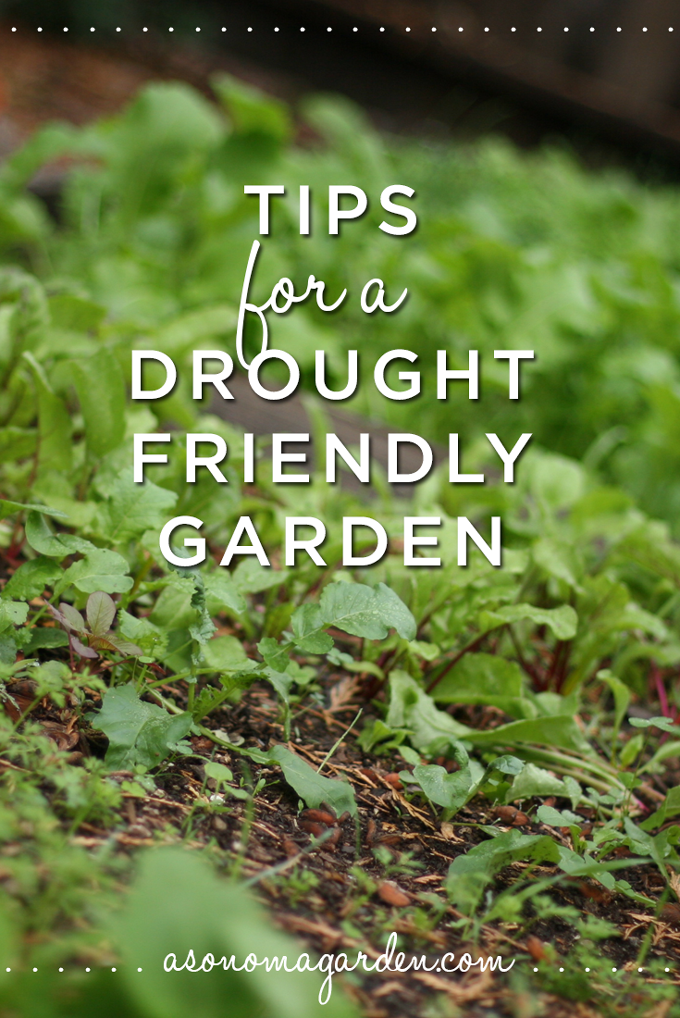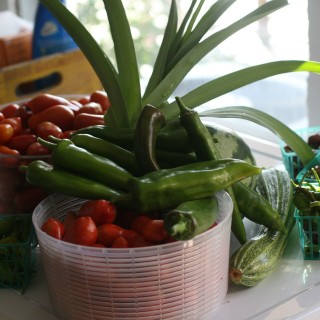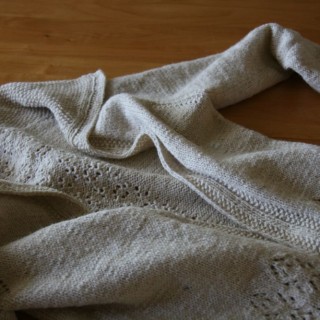 As a native Californian, you get used to the word ‘drought’. It comes up every once in a while so you do what you can to cut back on your water usage. Sometimes it gets so bad that you expect that everyone has to let their lawn die that summer, you adopt the rule, “if it’s yellow, it’s mellow, if it’s brown, flush it down.” You put buckets under the bathtub faucet to catch all the cold water before it turns hot. You do what you can.
As a native Californian, you get used to the word ‘drought’. It comes up every once in a while so you do what you can to cut back on your water usage. Sometimes it gets so bad that you expect that everyone has to let their lawn die that summer, you adopt the rule, “if it’s yellow, it’s mellow, if it’s brown, flush it down.” You put buckets under the bathtub faucet to catch all the cold water before it turns hot. You do what you can.
But this year is different. Because we’ve had such a warm, dry winter this year as well as the past two years, we are really low on our water levels. Frighteningly low. At the rate we are using water and the rate we are receiving rain, the main reservoir in our county, Sonoma County will be dry in July. Dry. Bolinas, the infamous hippy beach town, could be completely out of water by April! Out of Water! They are calling this the worst drought EVER in California’s history. A 30% water rationing is coming in the next couple of weeks to us. And a 50% rationing is probable if we don’t get much more rain.
So what do you do in this situation? Give up gardening all together? Mainstream agriculture uses about twice as much water (and maybe much more!) to irrigate as a small scale, organic and well planned home garden. It almost seems to be a better thing to grow your own vegetables in a drought. But to do it thoughtfully. We’ve been doing some reading and planning and making changes to the garden for this upcoming dry growing season. Here’s what we’ve learned:
- Grow Your Crops Before the Summer Heat Starts – Instead of doing a heavy summer planting, do the majority of your planting in spring with short season vegetables. Plant lettuce, peas, radishes, spinach, beets, onions, garlic and broccoli all which thrive in the cooler spring weather. Keep your summer plantings spare and then when fall arrives you can replant the same things you did in spring.
- Plant Drought Tolerant Vegetables – Some vegetables don’t need as much water as others. Amaranth, cow beans, corn, mustard greens, purlane, spinach, tomatoes, chard and a few others don’t need as much water. You buy a Drought Tolerant Seed Mix. The Veggie Patch Reimagined has a great list of drought tolerant plants. And you can read more about drought tolerant vegetables here too.
- Double or Triple Dig Your Beds – While double digging is a common idea in America with organic gardening, in parts of Africa they triple dig their beds. Their crops are much more successful than their non-digging neighbors gardens. If you aren’t familiar with double or triple digging, basically you dig out the first layer of soil about one shovel deep. Then you dig out a second layer and if you are really ambitious then you can dig out a third layer. Doing this aerates your soil making it easier for the roots of your plants to grow down, thus making it easier for the roots to pick up the water that is already deep in the soil.
- Add Compost to Your Soil – Having your garden beds be composed of at least 2% of compost will help your soil retain a great deal more water.
- Mulch – Adding a 3-4 inch layer of mulch to your garden beds will do wonders. I found it amazing what a difference this made to my flower beds years ago. A night and day difference in the health of the plants once dry old August came around. You can use either compost, grass clippings or straw as mulch (there are many more mulch options too).
- Water at Night – In thinking of using your water to it’s best advantage, water in the evening. Most vegetables do most of their growing at night and that is when they’ll need the most water. If you water in the morning or mid-day, most of it will evaporate and not benefit the plant at all.
- Water the Right Amount – If you are watering from a hose, you should water just long enough for the top layer of soil to look shiny. Once it looks shiny, turn off the hose. It should remain shiny for 3-5 seconds after you turn the water off. If the ‘shine’ wears off faster, water a bit more, if it takes longer to soak in, water less.
- Install Irrigation on a Timer – The best way to water plants properly and save the most amount of water is to install some sort of irrigation that is regulated by a timer.
- Plant Vegetables Close Together – There are many advantages for planting your veggies close together. But in thinking of water preservation, planting things close together creates a canopy layer over the soil, which shades it and prevents evaporation.
- Choose Plants that Produce in Abundance – When water becomes a precious commodity, when it comes to gardening, you want the most bang for your buck. Plant vegetables that produce a copious amount of edibles. Tomatoes, squash, peppers, eggplant among many others produce many meals worth of produce. Broccoli and cauliflower both take up a large amount of space and water and only really produce enough for one dinner, maybe two.
- Try Dry Farming Your Tomatoes – Some people swear that by dry farming their tomatoes they acheive the best flavor possible. To do this you have to really build up your soil with organic matter by way of adding compost and growing cover crops. Then basically you plant your tomatoes and let them grow without watering. You only water when their leaves start to turn yellow and then you do so rarely and deeply. Once the tomato plant develops fruit you stop watering all together. This allows the plant to focus not on new growth, but developing the fruit. You tomato plants will be ugly and straggly by doing this and your yield will be small, but you’ll have great tasting tomatoes.
- Place Drainage Pipes Between Crops – By using the technique that we’ve learned over the years of placing drainage pipes between our tomatoes, we’ve been able to cut down to watering our tomatoes only once a week, if that.
- Use Grey Water from the House – We’ll be buying some large buckets with sturdy handles and maybe a rain barrel for outside to fill with our indoor grey water. Any water remains from washing things out in the salad spinner, cold water before a hot shower, etc will be put in these buckets for watering the garden. We also divert our washing machine water to our ornamental shrubs, which helps keep that area of the yard look lush even in the middle of summer.
- Don’t use Roof Water – From the reading I’ve done, it is not safe to use roof water collections to water edibles. The water picks up whatever chemicals are in your roofing and make it not such a healthy thing to water your veggies with. Leave that for the ornamentals only. And it isn’t like we are getting much rain to catch this way anyway. We’ll be skipping this step.
Do you have any water saving tips that we can add to our list? I’d love to hear them…we need all the water tips we can get.








Have you ever looked into a recirculation pump for your hot water? The way we did it was to install a simple timer which, when turned on, signals the pump to begin circulating water through our on-demand tankless heater and forces the hot water through the pipes so hot water is at the faucet already before you even turn it on. I’m sure there are more high tech ways to do it than what we have done, but even the simple way we did it saves the hassle of catching the cold water and then transporting it outside for every shower. For washing hands we just use cold.
A drought friendly vegetable garden is also what you need here in Australia. One thing that’s promoted here is embedding a tube next to plants and watering into the tube, rather than the plant directly. The idea is to take the water deeper into the ground, thereby encouraging the plant to spread it’s roots further down – which means you don’t need to water as often.
Suggestions are usually to recycle a plastic bottle (with the flat end cut off), or a plant containers for this purpose.
Erin-do you need a on-demand heater to do that? I’d like one. We need to insulate ours at least.
I saw an idea recently where they take the gray water and re-route it to flush the toilet with. Another thing we used to do in Florida was to use eco friendly laundry detergent and then re-route the water from that to drain right into the garden. Our plants grew like crazy! If you’re careful of what products you use to bathe and clean with then you could essentially re-route all but your toilet water that way. I”m sure if you got creative you could find ways to do all kinds of things that way.
Thanks Joe, Kathryn & Barbara for your good ideas. I love the laundry re-route idea. That would provide a LOT of water. I wonder how tricky that would be to set up with the plumbing…. Scott and I will have to talk about that. Our house does have a gray water tank, actually. It just hasn’t been used in decades. It’s buried underneath our lawn. I wonder what condition it is in after all these years. (It must be as old as this house – over 60 years old)
Another water saving tip would be to buy potted vegetable plants. This would save all the water it took to get the plant started and growing. Garden Harvest Supply offers over 200 varieties of potted vegetable plants. http://www.gardenharvestsupply.com/category/home-garden-plants-potted
I had to ask my husband about the reciruculation pump for use with a tank heater and he said absolutely yes you can use one. He said with the last few remodels he has done it has been a requirement in fact, tankless or not.
I never thought rain would put such a big a smile on my face. Isn’t it supposed to be depressing with the gray sky? I can’t stop grinning.
Like usual, I am trying something new in the garden this year. I got this awesome book by Linda Woodrow called The Permaculture Home Garden, and it is full of absolutely wonderful ideas. Instead of laying out my garden in wide rows, I am planting in a series of circles. (Mandala Shaped) and using my chickens to cultivate each planting area. My husband is building me a domed shaped moveable chicken tractor. I think that planting everything close together should help with water conservation. I also had amazing results with the “No Work” method last year when I mulched the garden in a heavy layer of rice straw. I am going to be doing that again this year too. I think I’ve figured out how to route our laundry water to the garden using a hose and some perforated pipe. One of these days I will get around to updating my blog. I work for a big winery, so if you are ever in need of some whole barrels for water catchment please let me know. I can get them super cheap.
Last summer I used an unused plastic storage container (the kind you get from Walmart that come with a lid) to catch rain water. It was a cheap and easy container. I wasn’t aware of not catching roof water, though, and that’s what I was catching. I will probably still do it, and just use it on my flowers. I did have to make sure I emptied it out completely every few days, though, because the mosquitoes loved it. There were constantly little mosquito larvae swimming around in there if I left water in it too long. I also got a bucket and left it on my counter. When I was rinsing off dishes, I would poor any extra water in there. Sometimes I would have cups half full of water, or bowls that had water in them, and I would pour it all in the bucket. When I had gathered enough, I would take the bucket out and water straight from that or I would add it to my rain container.
Hmmm, I will have to figure out a different place to catch rain water (not from the roof), as well.
I anticipate seeing what you come up with!
Your underground tank must be inspected before you start using it. Many of them crumble apart over the years. It is probably not a “gray water” tank, more likely a cistern that catches the water from your gutters, which is even better. You also need to check with your local county extension agent as many counties have rules against using gray water for vegetable plants.
So sorry to hear about your drought. I understand it’s pouring south of you right now. Hopefully it will migrate north…
Oh, and we here in the PNW always sell you all our water, so it may be expensive, but you’ll have water this year regardless of your snowpack…
As for your water saving tips, those are good for anyone, including us here in the wet, wet PNW. Though I must say, rain barrels are popular here, and we use them for our edibles. I don’t have any but it’s on my list of things to do. I’d read about the leaching effect, but I’m pretty sure it’s fine.
Another idea is to grow your tomatoes in Self Watering Containers. They use only as much water to grow as the plants need and there is no waste of any sort. Sure they’re ugly, but I love them. They take my tomatoes out of my garden and put them in the isles between the beds. I won’t grow tomatoes any other way.
Good luck and pray for rain!
Thanks for posting this…I’ve been thinking about it a lot myself, as we plan to put in a large garden this year in our new house (also Sonoma county). My plan-in-progress includes buckets in the house for unused/lightly used water catchment, and deep mulching.
When I dry-farmed tomatoes in the past (east bay, foggier) I had a fantastic crop, but they were planted on 6-foot centers. I planted right towards the end of the rainy season, watered them in, and never watered again. The idea is that the roots grow and follow the water table as it moves deeper. I don’t know how well it would work for me now without all that space, though maybe deep mulching would allow for closer than 6-foot spacing. It’s going to be an interesting year!
Thank you to everyone for all of your comments! Luckily we’ve had about a day and a half of rain since I wrote this. And it looks like there will be some more in the near future. It won’t make a big difference to the resevoirs, but every drop counts at this point.
Sarah – I love the idea of the round chicken tractor to fit over your new beds.
Sinfonian – I was surprised myself when I read that harvesting roof water wasn’t a good idea, because I’ve read about so many people that do it. Maybe I read some bad info. I’ll have to try looking for it again. It doesn’t seem like the water would be on the roof long enough to absorb any harmful chemicals.
Sharon – It is nice to meet you. I’m from the East Bay myself. I think I’m going to talk Scott into dry farming one of our tomatoes this year as an experiment. It would be fun to see the difference.
Where I am in Australia we are also experiencing some lovely rain after months of dry, it’s wonderful! Although I am yet to try one, many gardeners dealing with the extended drought over here are having great success with “wicking beds” – an extension of Kathryn’s tip about using the watering tube. There is some information about them here: http://outbackharvest.blogspot.com/2008/09/wicking-worm-beds.html and here: http://www.easygrowvegetables.com/wickingbed.html. Unfortunately they require digging out existing beds but gardeners here during the recent heat wave of 104’F+ temperatures found these beds didn’t need extra watering and were the only beds where the plants didn’t wilt or stress.
Cheers, Julie
Great site. Thanks. I have seen a mulch made by tilling the soil to make a fine dust in apple orchards when I was a child. I have read about dust mulches as an old method of mulching.
Since a mulch works by having larger spaces between its particles than the underlying soil, the fluffed up soil worked till dust-like becomes a mulch.
Marlena- Thanks for letting me know about the dust mulch. I want to read up about it some more!
These are great tips! We are thinking about converting at least part of our front yard to vegetable gardening and definitely want to be smart about it, considering this crazy CA drought. Thanks for the post.
Great post. We’re just coming out of our driest summer in years and have had total water restrictions. At one stage we came close to having our tap water completely cut off. During the worst of it we were sharing bath water and then using that water to flush the toilet throughout the day. No sophisticated system – just a bucket next to the bath to fill the toilet tank. Each flush uses about 17 litres of water, so it seems a pity to stop now that the rains have come!
Choosing the right crops seems to be important but I like your list of tips and will try the close planting. Carrots and parsnips seem to do well in a dry summer in England
Thanks for this post. We’ll be teaching the Dirt to Dinner kids a lot about water conservation this year and plan to test several of your ideas. We’re just South of you in Santa Clara and we’re ready to let the lawn go, but determined to do the best we can to save the vegetables.
Lots of practical, thoughtful comments here. Thanks for setting this up.
Way back in 1978 or 1979 when we had a good drought here in Sonoma County, I recycled gray water from the washing machine to the toilet. I bought a 55 gallon barrel from the local junk yard to be the intermediate storage. I extended the drain tube from the clothes washer to this barrel, using the pumping of the washer itself to move the water. In the barrel, I dropped a sump pump and ran its output to the toilet tank. I attached some kind of switch to the toilet float (sorry I don’t recall the details right now) so that the sump pump would run after the toilet was flushed. It worked well, except there was a lot of lint that needed periodic cleaning from the toilet tank.
We had a new baby at the time with cloth diapers, so it was really worth it at the time.
I’m toying with catching shower water and using it on the garden/landscaping. I’m really interested in what soaps are landscape friendly. Any information/opinions on this?
Ken
Hi Ken, I love your homemade gray water system! We cloth diaper so we do a lot of washing too. I’ll look into those landscape friendly soaps for you because we’d like to channel our laundry water to the garden. Not the diaper water though, ick!
Amway washing powder is fine for grey water, but I make my own with equal parts washing soda and borax. Work great and totally organic.
I am using the “Back to Eden” gardening method. Its drought resistant. Might never have to water even in a long drought.
http://vimeo.com/28055108
I believe soapy grey water is not going to be detrimental to plants. Even if it were the only source of water to plants, the pH, not the constituents of the soap has the potential to be detrimental to the soil. Soap is mainly a long chain carbon molecule (fat) that has gone through saponification (hydrolysis reaction of a fat with a basic solution). Other constituents including popular anti-microbial soaps do not pose threats to the soil or plants. The most popular anti-microbials are chelating agents which are also packed with energy ready for rapid degradation by soil microorganisms. Overall the grey water should be fairly benign to the soil. The raise in pH from the soaps may be the only potential problem, depending on the concentration of soap products used. Just remember, water the soil, not the plants. Plant tissue is not going to handle grey water!
I read that you recommend to use your grey water on your vegie garden, here in Australia (East Coast N.S.W. Illawarra regin)we are told NOT to use grey water on any eatable crop as there is no information as to if the vegetables are holding any harmfull bacteria or other narsties which can come from grey water.
We are advised to only use the grey water on the lawns & flower gardens.
The water saving method I use is a gravity fed drip irrigation system that I made my self. It works very well & my vegies are growing past expectations.
This combined with a good quallity organic garden bed has reduced my watering to 2 times a week with about a 75% reduction in water usage.
I will admit that I have spent about A$500 dollars to acheive this, I believe that this will be a 1 off cost with minimal on going costs. I do believe it is worth the expence to have chemical free, fresh & healthy vegetables.
I also have the disavantage of a good sunny position, in winter my garden on a sunny day will be lucky to receive 4/5 hrs of sunlight.
great tips you have here. This would really come in handy for those who live in California.
Just came across this post. I live in Canada but I am trying to figure out if I can grow vegetables at the cottage if I only go there on weekends. I’m looking into an rain barrel irrigation system. Thanks!
This post was originally written in 2009 and I am commenting in 2012. I believe more information has been discovered about drought since 2009 and it’s important to note that point 3 about double or triple digging a bed, can increase the rate of evaporation (ie: what allows the water to go down, also allows the sun to dry out) it also kills the earthworms, which are already airating the ground and feeding the micro-bacteria, which is important for healthy crops too.
Sunlight will kill earthworms and micro-bacteria, that’s why they live below the surface.
Lastly, if you dig down below the natural earth layer, you can bring up clay which sets on the surface. No matter how much it rains, you will put a permanent seal on top of your soil. I’m not sure why Africa would adopt such a practice as triple digging, it may be why their crops are failing? It would certainly require a constant supply of water to counter-act the evaporation rate. Not exactly feasible to do in a drought.
In Australia, it’s not entirely a lack of water which is the problem – it’s the evaporation rate that dries everything out quickly. Mulch definitely helps in this department, but if you don’t disturb the lower soil levels, the worms, micro-bacteria and moisture can continue to do what they were designed by nature to do best – airate the soil, feed it and keep it healthy.
I read all the suggestions and have’nt seen this one.A buddy at work said he rerouted the drain from his evaporator coil on his central ac unit and was getting 5 gallons a week of water. I bought two used 55 gal. barrels and was going to try it. Most evaporator coils are in your attic and drain in your plumbing.
If you look at how fresh water is used, less than 10% goes to residential use. Most fresh water goes to feeding livestock and to power plants. Eating less meat and conserving electricity will save more water than anything you do at home
I like your advice about watering at night. Evaporation is something to consider when watering. It’s also good to water at a really slow pace that way the water can soak in and not be lying at the surface with a greater chance of being evaporated. Drip irrigation works really well for this.